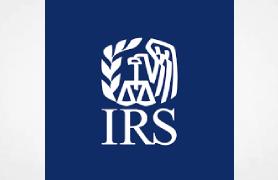Authored By: Rod Kight
May 31, 2018
Did the Federal Right to Try Act Just Legalize Medical Marijuana?
No. So why am I writing about it? I feel compelled to clear things up.
I’ve heard and read a lot this week about how the Trickett Wendler, Frank Mongiello, Jordan McLinn, and Matthew Bellina Right to Try Act of 2018 (Right to Try Act), signed into law by President Trump on May 30, 2018, functions to legalize medical marijuana. It does no such thing. What it appears to do is allow terminally ill patients to try investigational new drugs that have not yet been approved by the FDA. I say “appears to do” because the reality is much more complicated. To be an “eligible patient” (ie, someone who may try eligible non-approved investigational drugs), one must have been diagnosed with a life-threatening disease or condition, have exhausted approved treatment options and be unable to participate in a clinical trial involving the eligible investigational drug, be certified by a physician (who must meet several independent criteria), and have provided the certifying physician with written consent. Additionally, an “eligible drug” for purposes of the law must have successfully completed a phase 1 FDA trial, plus comply with a number of other statutory provisions.
The provision about having successfully completed a phase 1 trial is particularly important. As described by the FDA:
“Phase 1 includes the initial introduction of an investigational new drug into humans. Phase 1 studies are typically closely monitored and may be conducted in patients or normal volunteer subjects. These studies are designed to determine the metabolism and pharmacologic actions of the drug in humans, the side effects associated with increasing doses, and, if possible, to gain early evidence on effectiveness. During Phase 1, sufficient information about the drug’s pharmacokinetics and pharmacological effects should be obtained to permit the design of well-controlled, scientifically valid, Phase 2 studies. The total number of subjects and patients included in Phase 1 studies varies with the drug, but is generally in the range of 20 to 80.”
From a clinical trial perspective, phase 1 is not the most onerous of the three trial phases. However, FDA clinical trials are lengthy, expensive, and consume substantial time and resources. From a real world perspective, successfully completing a phase 1 trial is an enormous undertaking. It is not for the faint of heart or, more importantly, the light of pocket.
Also, FDA clinical trials are generally conducted for specific compounds, not plants. The only form of cannabis that has passed a phase 1 trial is Epidiolex, an epilepsy medication consisting of natural cannabidiol derived from marijuana. It recently completed all three test trials. As of this writing it has not been approved by the FDA. (Three synthetic canabinoid-based medications have been approved by the FDA: Marinol (dronabinol), Syndros (liquified dronabinol), and Cesamet (nabilone).)
In fact, given the stringent requirements of the Right to Try Act, the number of eligible patients who will have access to eligible drugs appears to be minimal. And, in fact, getting investigational drugs to terminally ill patients does not appear to be the primary intent of the law. As is often the case, a primary driver of the law is political. In a letter to FDA Commissioner Scott Gottlieb, Senator Ron Johnson (R-WI), the sponsor of the bill, said the goal is to “diminish the FDA’s power over people’s lives, not increase it.” Reasonable people can disagree over the proper scope and power of the FDA, or any other government agency. However, it is clear that a primary purpose of the Right to Try Act is to reduce the FDA’s power, not to serve terminally ill patients, much less slyly legalize medical marijuana through a legislative “back door”.
The number of eligible patients under the law who will have access to anything that can reasonably be described as “medical marijuana” is currently zero and will likely remain that way. Certainly, it is within the realm of possibility that, one day, eligible patients will be able to try an investigational form of medical marijuana; however, the odds of federal decriminalization occurring before then are much higher.
So, the next time someone says that the federal government (or Trump) just legalized medical marijuana via the Right to Try Act, tell them that they should read the law, not the hype.















